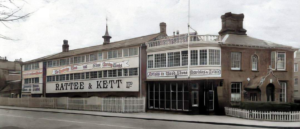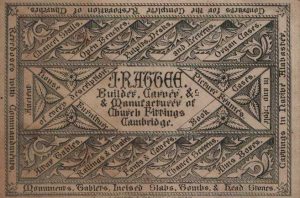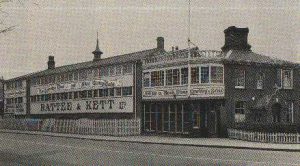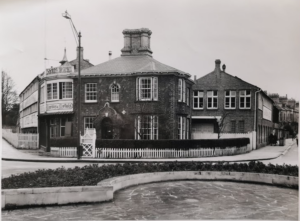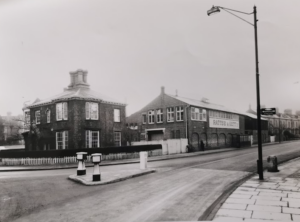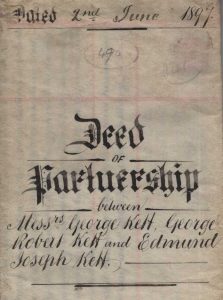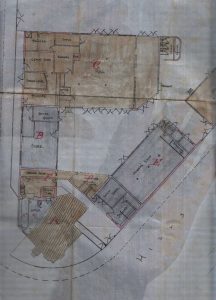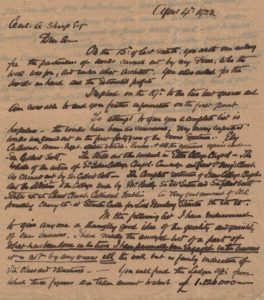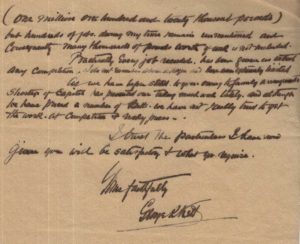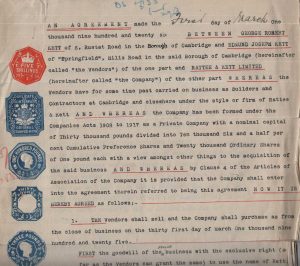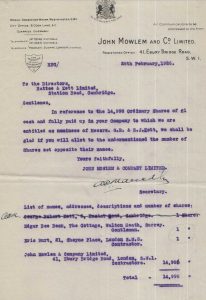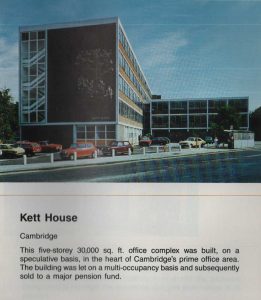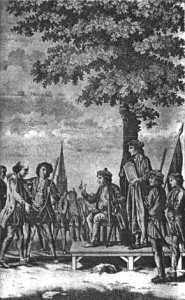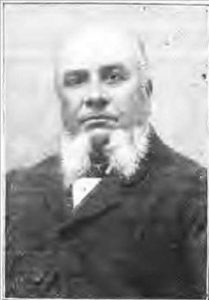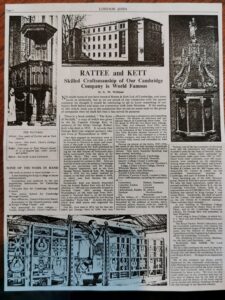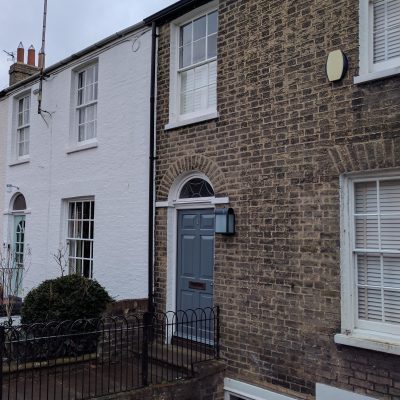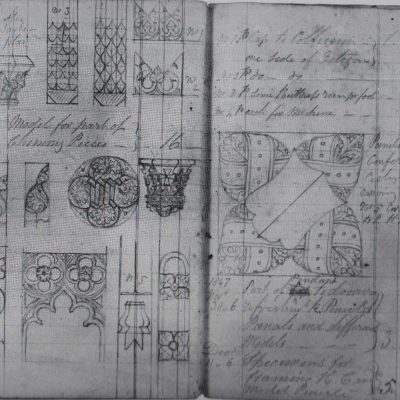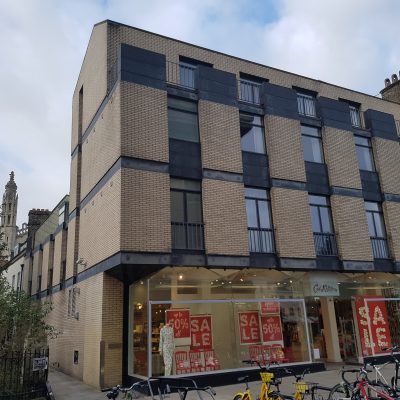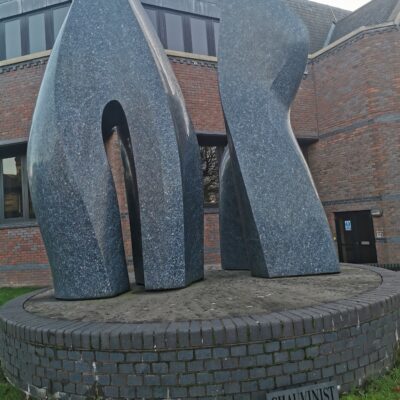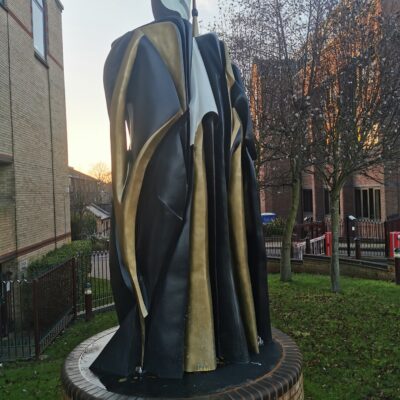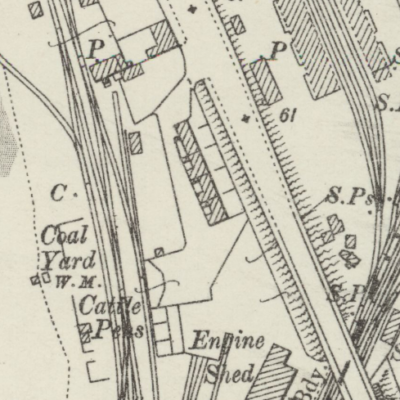Search by topic
- archaeology
- Building of Local Interest
- charity
- church
- crime
- dressmaker
- fire
- Great Eastern Railway
- Listed building
- Mapping Relief
- medieval
- oral history
- poverty
- Public House
- Rattee & Kett
- Religious House
- Roman
- scholar
- school
- Then and Now
- tudor
- women
- work
- world war one
- world war two
Search by text
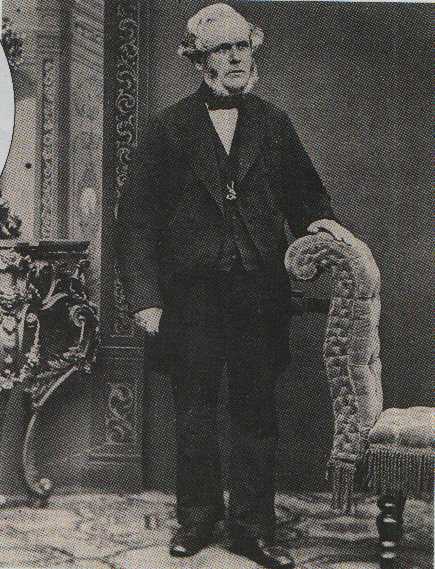
Rattee and Kett/Kett House (45 Hills Road)
Historical notes on Kett House
1851
(Rattee House)
James Rattee, 30, carver and builder employing 40 men and ? boys, born Norfolk
Caroline Rattee, wife, 30, born Lowestoft
Louis Dezouche [?], apprentice, 21, carver and builder’s apprentice, born Dublin
Harriett Taber [?], house servant, 14, born Cherry Hinton
1861
(45 Hills Road Wood and Stone Carving Works)
Caroline Rattee, head, widow, 40, wood and stone carver & builder, born Lowestoft
Elizabeth Rattee, sister in law, 30, proprietress of houses, born Norfolk
Herbert Berridge, nephew, 8, born Cambridge
Priscilla Bye, servant, 23, born Cambridge
This is the location of the original Rattee and Kett works.
James Rattee set up his Wood and Stone Carving Works next to his house, Poplar Cottage, in Station Road in 1843. The road had previously been known as Slaughterhouse Lane and had been in the ownership of the Haslop family. The railway came to Cambridge in 1845 and Rattee and George Kett went into Partnership in 1848. George kept 50% of the profits and his sons 25% each.
In 1897 a partnership was formed between George Kett and his two sons, George Robert Kett and Edmund Joseph Kett.
This is a 1907 plan of the Cambridge Carving and Building Workshop at the junction of Hills Road and Station Road. The A area shaded brown at the bottom is Poplar Cottage.
This is a letter written by George Kett in 1923 in response to an inquiry about the projects the firm had been involved in over the previous 40 years.
The partnership was dissolved in 1926 and the business sold to Rattee and Kett Limited. The vast majority of the share were held by John Mowlem and Co. Ltd. However, George Robert Kett continued as manager at a salary of £800.
Rattee and Kett started to move to property they owned in Purbeck Road in the 1940s. First the stoneworks, then the rest of the business in the 1950s.
The following short history of Rattee and Kett was published in Mowlem Today January
1993
Rattee and Kett -150 years of Achievement
A letter to the Cambridge Weekly News in July 1986 provided interesting information about this building and its association with the Kett family:
The new building, Kett House, contains a feature, the meaning of which seems totally unknown but if one takes time to examine the stone sculpture on the north elevation of the building it is more than a few pieces of stone
The sculpture represents the Kett Oak…
To those who are unfamiliar with the history of “Kett’s Oak,” George Kett, the original partner, was descended from Robert Kett, who led Kett’s rebellion in 1549, and was eventually executed in Norwich Castle.
The remains of the Kett Oak still stand, surrounded by iron railings. It is on the left of the main Newmarket to Norwich road near Wymondham. It marks the place where Kett held courts and organised his followers.
When you look at the sculpture the tree becomes quite plain to see. Then you can see Kett holding court with some of his followers and in one instance a figure with a child on her lap.
More information about Robert Kett can be found here:
https://en.wikipedia.org/wiki/Kett%27s_Rebellion
Sources: Cambridge News (Cambridgeshire Collection)
Contribute
Do you have any information about the people or places in this article? If so, then please let us know using the Contact page or by emailing capturingcambridge@
License
This work is licensed under CC BY-NC-SA 4.0





